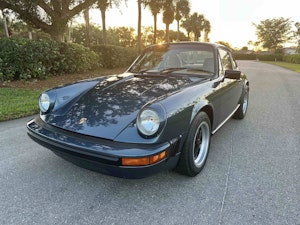Media | Articles
What Monterey 2019’s crashing numbers really mean
“The sky is falling!”—Henny Penny
I feel safe to say it isn’t, but Chicken Little syndrome pretty much sums up the collectible car market in the wake of a major auction event like we witnessed in Monterey. As Hagerty reported in depth in the days and weeks following, the 2019 auctions ended with a $115 million shortfall from last year’s, with sell-through rates and average prices also down. Crashing numbers make for great headlines, but they certainly don’t tell us everything. So what’s the story?
The upper end of the market—specifically, multimillion-dollar cars—is sucking a fair amount of wind. So are cars just coming off record runs of triple-digit appreciation (think air-cooled Porsches and Enzo-era Ferraris). And so is anything in subpar shape. But within the segments taking major hits are markets that are going gangbusters. Late-model exotics and new-to-the-U.S. cars benefiting from the 25-year import rule are strong across the board. So, too, are vintage motorcycles and SUVs. More succinctly, there is opportunity in the vehicles we now buy with enjoyment in mind rather than investment potential.
The bigger question surrounding the Monterey result is whether it was expected. That’s tricky, because we have these two main auction events that people rely on as the barometers for the collectible-car market—Scottsdale in January and Monterey in August. For the past 10 years, they’ve been on a tear. But the reality is that sales from Scottsdale and Monterey represent less than one percent of the collectible cars sold in a given year. In between these two 2019 events, those of us in the trade who buy and sell cars daily have watched the market gradually slow to where it is today.
Yet somehow, many people, including those who buy old cars solely for profit or as investments, became accustomed to the feeding frenzy created by rapidly escalating prices. Like the stock market, when it’s hot, it’s hard not to win. But when it cools, you’d better know what you’re doing. Lots of people need to learn that, and quickly, because all of a sudden the hobby of flipping cars doesn’t have the same appeal. Especially after Monterey, which I can only assume was like getting slapped across the face with a mackerel for some flippers.
Marketplace
Buy and sell classics with confidence

For the rest of us, there is a silver lining, and it comes in the form of opportunity. There are tremendous cars out there selling at a discount from their peak values, with others poised to take off. Two up-and-comers I recently purchased were a nearly perfect 1985 Toyota MR2 and one of the earliest Saleen Mustangs ever built—for $25,000 less than a similar Saleen sold for shortly after. To me, the MR2 epitomizes the birth of the 1980s Japanese “pocket rocket,” and I liken the Saleen to the early hand-built Shelby Mustangs. They’re fun, and I think the market will eventually reward both.
In the weeks since Monterey, I’ve noticed an uptick in overall market activity. Perhaps others agree it’s a good time to buy? As one example, I watched a 1964 Sunbeam Tiger GT sell on Bring a Trailer for $133,000. That’s a strong result for the car, and three bidders fought from $78,000 all the way to the end. But more telling than the price was this car’s journey to get there. It was a no-sale at $115,000 on BaT in November 2017. It was then bid to $110,000 but not sold at Mecum’s 2018 Monterey sale. During Monterey 2019, it was parked across the street from RM Sotheby’s with a “for sale” sign in the window. Then the seller listed it again on BaT, this time at no reserve. He had a lot of faith in, or perhaps a great fear of, the market but made the decision to sell the car no matter what. And his decision was rewarded with a winning bid much higher than the two times when the market was considered stronger than it is today. When a seller decides to manage expectations and a buyer decides to seize the chance to get a car she or he wants, everything works out fine.
With all due respect to Chicken Little, I think that’s exactly how it should be.
The article first appeared in Hagerty Drivers Club magazine. Click here to subscribe to our magazine and join the club.










